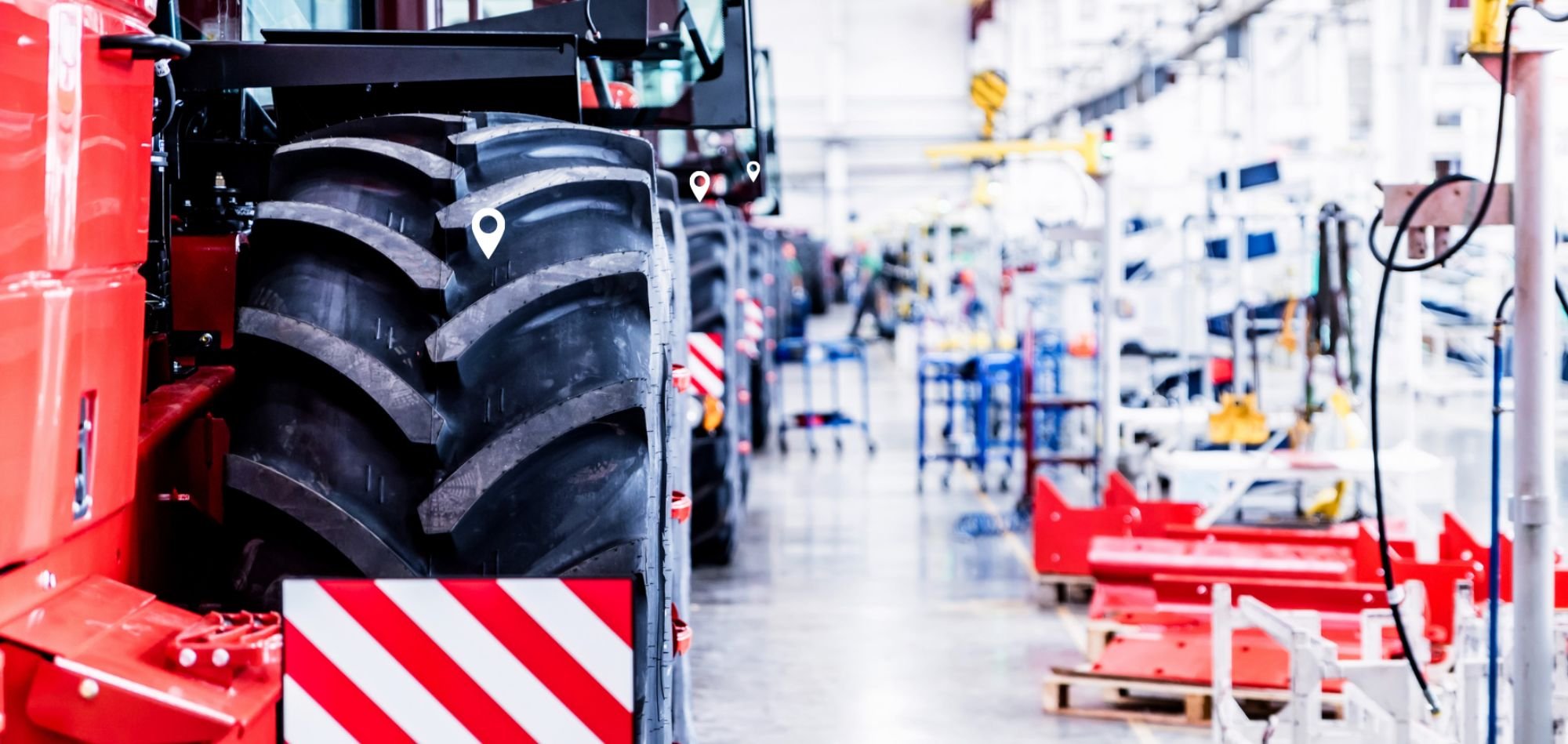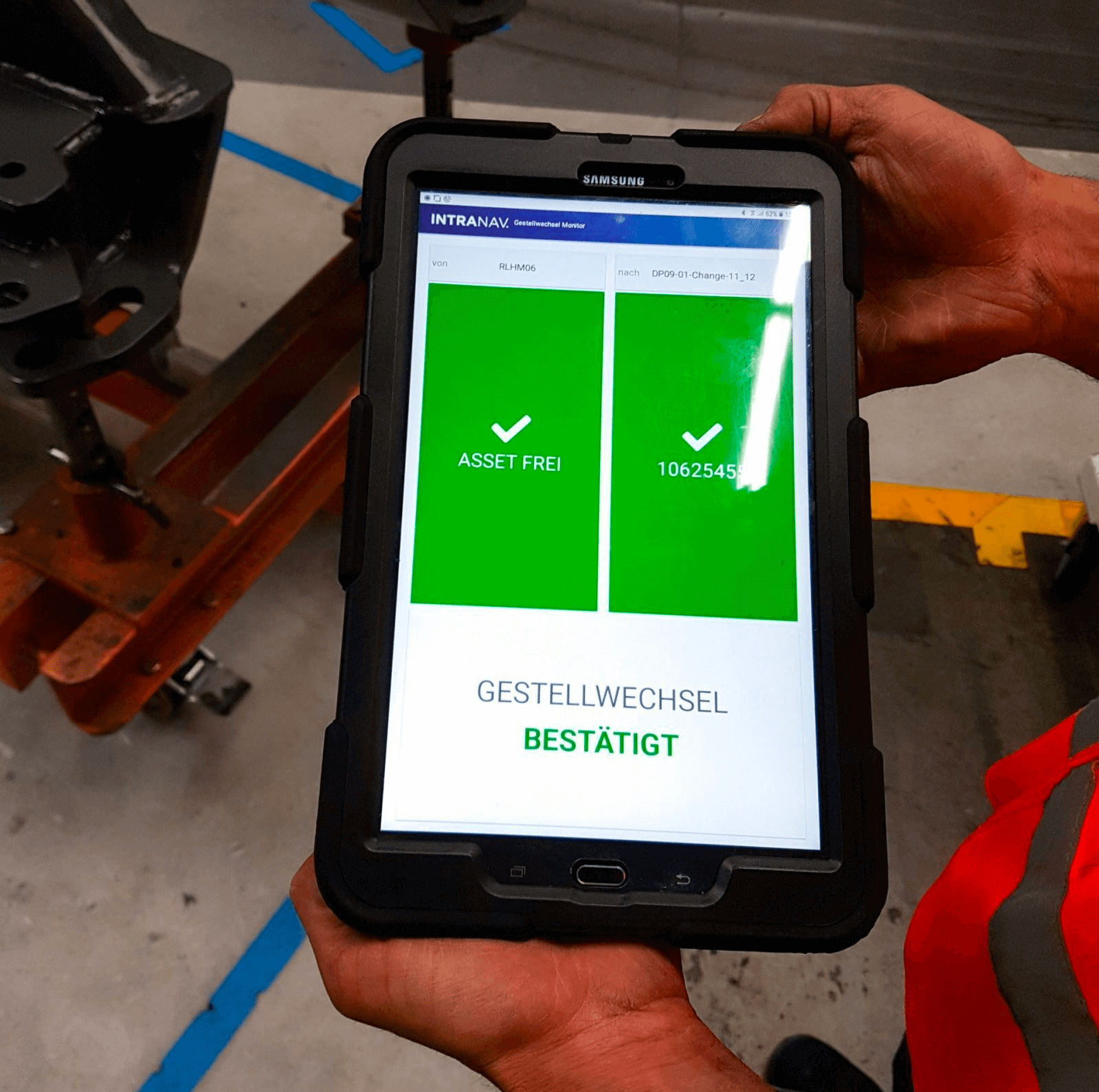SUCCESS STORY
Intelligent process optimization and quality assurance across the production line
Read More Download PDFBased in Germany, this international manufacturer operates one of Europe’s most modern production facilities, producing all-wheel steered wheel loaders, teleloaders and telescopic loaders for construction, agriculture, landscaping and other industries.
Manufacturing of heavy machinery, like the large construction equipment of our customer, requires a high degree of production steps. Historically carried out manually, these steps need to be accounted for after assembly completion, and across each cycle to all next. Different model variants for the machines they are producing add even more complexity, which makes it difficult to monitor varying production parts and processes and ensure all quality standards are met. This concerns factors like quality assurance, scanner-based booking and cycle control of individual production steps throughout the entire assembly line, which at our client’s plant, consists of several pre-assembly and main assembly lines.

Assembly Line Real-Time Location Tracking
Precise cm-level real-time location information for all assembly steps as well as boxes, containers, load carriers, and racks on the assembly line being manually pushed from cycle to cycle.
Automatic Sequence Feedback
Real-time location and status information for automatic cycle updates and sequence feedback.
Eliminate Scanning and Posting Steps
Manual scanning processes, such as material, cycle-related transaction posting, or plausibility checks, are replaced by intelligent postings via Auto-ID.
Sequence-Related Automation Triggers
Enhance automation of production cycles with real-time location and status information that can trigger subsequent sequences with other systems. Digital and connected production information for setup processes to start automatically by means of programmable logic control (PLC).
With intelligent production control, we equipped this organization with a smart factory solution to power Industry 4.0 use cases and future digitization endeavors.
The production line was equipped with a real-time location system, which provides workers with accurate real-time information about the production status and location of boxes, containers, load carriers, and racks located on the assembly line. The information is digitized and visually displayed as a digital twin via the INTRANAV.IO RTLS platform.
Workers can see in real-time:
Individually defined virtual cycle zones (geofences) mean that the production cycle is automatically recorded as completed when the production piece and the load carrier are moved through different virtual zones. As a result, the next cycle can know the status of a previous step in real-time and when complete, start with its own. This automatic cycle feedback ensures quality standards are met, processes steps are monitored and validated, and eliminates human error or omitted sequences. It also saves workers valuable time, as manual scanning is no longer necessary.
Virtual geofenced zones are individually defined by the customer for each cycle via the INTRANAV.IO platform and replace manual scanning and booking processes with Auto-ID. Workers no longer need to scan machine card barcodes to book operations or material, as this is now automated across cycles through location-visibility.
Real-time location data is generated via RTLS tags installed to assembly trolleys throughout the production line. These contain corresponding ID group addresses to tell the system which tag is responsible for which assembly area. For example, there is a separate numerical circuit for the assembly trolleys of Product A for pre-assembly than there is for the assembly trolleys in the main assembly line. The same applies to production lines for Product B. Thus, every INTRANAV.RTLS tag has its own internal address. This means that the assembly modules are digitally networked and can track production orders paperlessly in all assembly branches.
With our assembly check feature, final plausibility checks validate whether components can be assembled with each other. Before proceeding to the main assembly, two geofences are used to check whether the individual component matches the corresponding assembly. This involves a system comparison in SAP, for which the results can be shown on a monitor to let personnel know whether the components fit together or not.
This important component check ensures that only compatible components and groups are installed together. This avoids assembly errors and time-consuming and costly reworks, thus ensuring the continuous quality and accurate processing of all further production steps.
At a defined point in the assembly process, a rack change must be carried out for production-specific reasons. An event trigger initiates the release for the rack change via two geofences. The components are transported from one rack to a new rack. Since the racks are connected to the INTRANAV.RTLS tags, the FAUF information also needs to be transferred automatically from the old rack to the new rack.
The INTRANAV.IO platform does this automatically, eliminating the need for manual scanning. The tag from the old rack is automatically reset so that it can be rewritten with new information. A confirmation message is displayed on a monitor as soon as this process has been successfully completed. This process step ensures the seamless transition of information transfer and further production tracking. Manual, error-prone, and time-consuming scan-based handling is no longer necessary, and the risks associated with paper accompanying documents, such as confusion or loss, are also completely eliminated.
Further processes triggers set via geofences can call up production order-related information and start additional setup processes for devices using a programmable logic controller (PLC).
The basis for plausibility of pre-assembly and main assembly synchronization of cycles, cycle-related picking (large components), generation of driving orders, and cycle-related option display are implemented via the INTRANAV platform. The process transparency gained by using INTRANAV’s IIoT RTLS solution ensures compliance with quality assurance and individual manufacturing steps.
Inefficient and error-prone production steps, such as manual scanning processes, are reduced and replaced by automatic cycle feedback. This helps free up worker time for higher value activities and reduces the chance of sequence errors and issues like costly reworks, inefficient material flow, empty cycles, long idle times and more. Visibility, availability and performance of limited assets, like specialized load carriers, can be increased, helping streamline asset management throughout production cycles.
